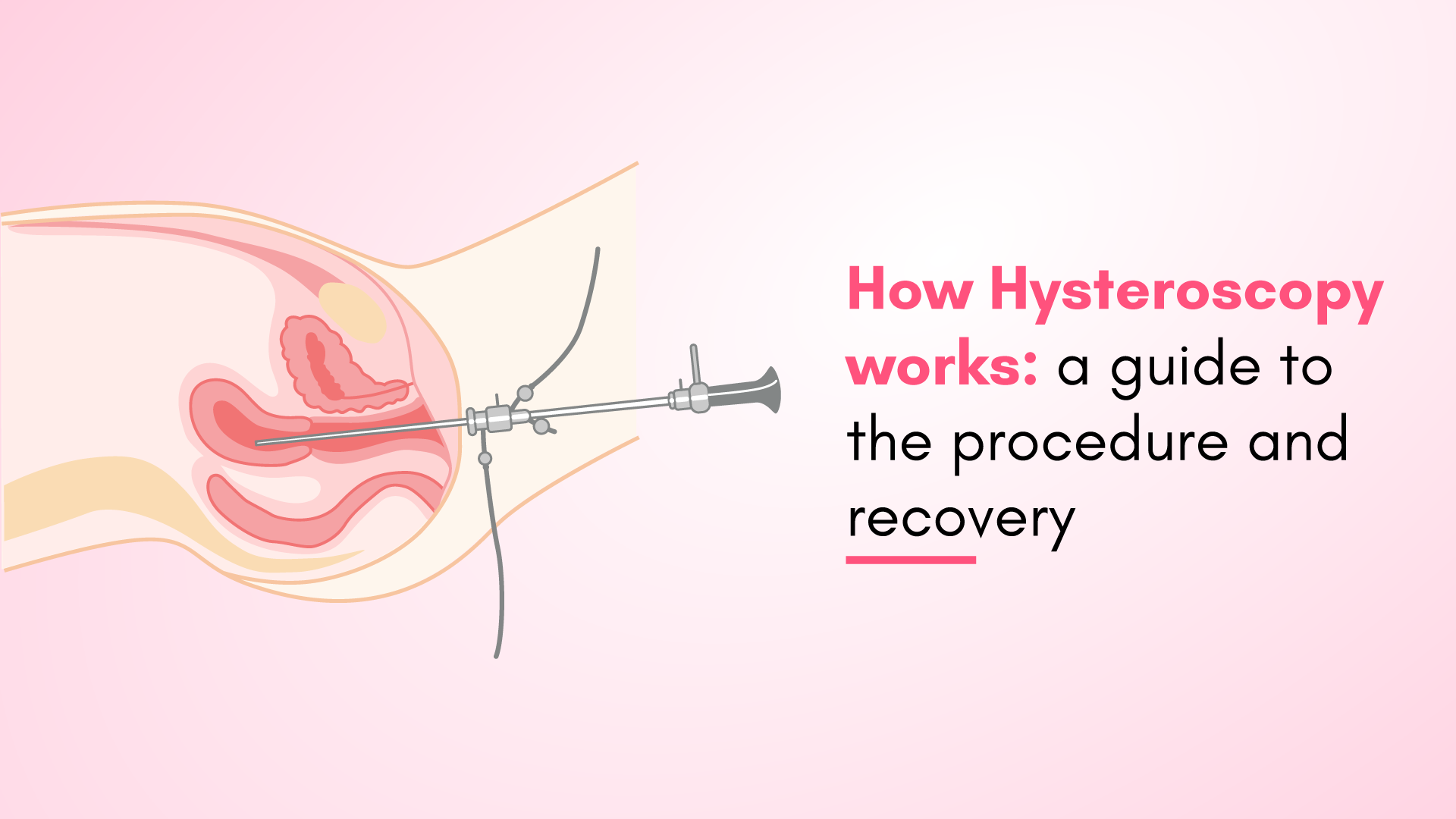Reviewed By: Dr. Nayani Enjamoori, fertility specialist at Ferty9 Fertility Center, Karimnagar
Have you ever wondered how doctors can look inside your uterus to diagnose or treat issues? It’s hysteroscopy! A procedure that many women undergo. But what exactly is a hysteroscopy? Let’s break it down simply:
What is Hysteroscopy?
Hysteroscopy is a diagnostic procedure that allows your doctor to see inside your uterus, vagina, and cervix. It uses a tool called a hysteroscope, a thin tube with a light and camera at the end. This procedure gives clear insights into your reproductive health without being invasive.
Related Read: How the First IVF Baby Changed Perceptions of Infertility
What is the Procedure for a Normal Hysteroscopy Biopsy?
When considering a hysteroscopy, it’s important to understand what a hysteroscopy’s role is in diagnosing conditions like uterine fibroids, post-menopausal bleeding, etc. The procedure focuses on two main goals:
- First, abnormalities in the uterus and its lining, known as the endometrium, are detected.
- Second, during a hysteroscopy biopsy, a small tissue sample is taken from any areas of concern for further examination.
Also Read: The Role Of Fertility Centers In Modern Reproductive Medicine
Step-by-Step Guide to the Hysteroscopy Procedure
On the day of the operation, the hysteroscopy procedure comprises the following step-by-step process to ensure thorough examination and potential treatment:
1. Preparation
Before a hysteroscopy, your doctor will typically schedule the procedure on days when you are not menstruating. This ensures clearer visibility and smoother examination.
Common preparatory steps include:
- Signing a consent form
- Fasting for a specified period
- Avoiding the use of tampons
You’ll start by emptying your bladder and changing into a gown. An IV line will be placed in your arm for any necessary medications. The vaginal area is then cleaned with an antiseptic solution to maintain sterility.
These steps are essential to ensure the procedure is successful and provides accurate results for your treatment.
Also Read: Pre-IVF Screening: Essential Tests Before Fertility Treatment
2. Anaesthesia
Local anesthesia is often administered to ease discomfort, tailored to your specific needs and condition.
3. Dilating The Cervix
A speculum is used to gently hold the vagina open, allowing the cervix to be dilated. This step is crucial for the hysteroscope to reach the uterus, ensuring a more comfortable experience safely.
4. Inserting The Hysteroscope
Once prepared, the hysteroscope, equipped with a light and camera, is carefully inserted into the uterus. This device enables clear visualization and detection of any potential issues.
5. Expanding The Uterus
The uterus may be gently expanded using carbon dioxide gas or a saline solution to enhance visibility.
6. Examination
Images captured by the hysteroscope’s camera are displayed on a monitor, allowing your doctor to assess your uterine health in real time.
7. Biopsy
Based on findings during the examination, a small tissue sample (biopsy) may be taken for further analysis.
8. Removing the Hysteroscope
After the procedure, all instruments, including the hysteroscope and speculum, are safely removed.
Also Read: Why Are Women Worried About Female Fertility Too Early?
Uterine Fibroid Hysteroscopy: Removal and Treatment
Uterine fibroids, common noncancerous growths in the uterus, can affect women during their reproductive years and beyond. If you’re dealing with sub mucous fibroids, hysteroscopy offers a targeted solution. Here’s how the hysteroscopic myomectomy procedure generally unfolds for successful fibroid removal:
Ultrasound
Using sound waves, ultrasound helps detect fibroids within the uterus. It provides clear images through two methods:
- Transabdominal ultrasound (external method)
- Transvaginal ultrasound (internal method)
This step confirms the presence and location of any fibroids.
MRI (Magnetic Resonance Imaging)
After confirming the presence of fibroids, an MRI scan offers detailed information about their size and exact location. This helps your doctor plan the most effective treatment.
Hysteroscopy
During the hysteroscopy, a hysteroscope—a thin, lighted tube—is inserted into the uterus. This allows direct visualization of the fibroids and surrounding tissue.
Hysterosonography
Hysterosonography expands the uterine cavity using sterile salt water to identify fibroids, especially those in the submucosal layers. It can also help diagnose blocked fallopian tubes.
This comprehensive approach ensures thorough evaluation and personalized treatment for uterine fibroids. Discuss with your healthcare provider to learn more about how hysteroscopy can help manage your condition and restore your well-being.
After Hysteroscopy: What to Expect During Recovery
Recovery from hysteroscopy varies depending on whether it was diagnostic or operative, and if both were performed, it may take longer. Sometimes, a laparoscopy may also be needed, which could extend recovery time. For the first few days (or as advised by your doctor) following the procedure, it’s important to avoid:
- Douching
- Intercourse
- Tampons
These precautions help ensure a smooth recovery and minimize any discomfort.
Indications for Hysteroscopy: When and Why it’s Done
Hysteroscopy offers valuable insights and effective treatment for various conditions. It may be recommended if you’re experiencing:
- Abnormal uterine bleeding
- Pelvic pain
- Thickening of the uterine lining (endometrium)
- Concerns related to endometrial cancer
- Bleeding after menopause
- Removal of fibroids and polyps
- Challenges with infertility
If you have any of these concerns, discuss with your healthcare provider how hysteroscopy can help you regain your health and well-being.
Hysteroscopy and D&C: Understanding the Connection
D&C, which stands for dilation and curettage, is a procedure where the cervix is gently widened to take a tissue sample from the uterine lining. This sample is then examined for any abnormalities. When combined with hysteroscopy, these two procedures offer a comprehensive approach:
- Minimally invasive diagnosis through hysteroscopy
- Detailed analysis of the identified abnormalities through D&C
If your doctor recommends a hysteroscopy with D&C, it’s aimed at providing you with the most accurate diagnosis and effective management options.
Conclusion
In summary, hysteroscopy offers a minimally invasive solution to various vaginal and uterine issues. Whether you’re dealing with abnormal bleeding or concerned about conditions like endometrial cancer, this procedure provides a clear path to diagnosis and treatment. At our clinic, we believe in turning hope into happiness. Contact our fertility experts today to learn more about how hysteroscopy can help you on your journey to better health and peace of mind.
Visit Our Clinic:
Fertility Clinic in Hyderabad
Fertility Clinic in Visakhapatnam
Fertility Clinic in Vijayawada
Fertility Clinic in Warangal
Fertility Clinic in Rajahmundry
Fertility Clinic in Tirupati
Fertility Clinic in Kurnool




